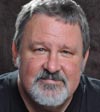|
IMAGE EDITING Chuck Williams |
About MeYeah that’s a picture of me right there on the left. I can’t help it if the best photo that I have was taken 10 years ago. :-) I love photographing interiors. I started specializing in architecture in the mid-80s. I’ve always enjoyed the fact that the subject of my work was inherently beautiful. That’s not something that you can always say about wedding photography, or portraits or products. I used to imagine that the space that I was shooting was created by a professional set designer just for me to photograph.
Sometimes in my marketing verbiage, I get deep into all of the technical aspects of image editing. But I would never want anyone to forget that everything that I like to call my “art“ exists only because of the interior designer’s art... But, you know, I like to talk mostly about myself. :-) I Was Born In A Log Cabin
Shooting interiors back then involved bringing in a lot of lights. The way I did it also involved doing some very tricky multiple exposures on a single piece of film. I would sometimes cover the windows and photograph the interiors with one filter. Then turn off the interior lights, uncover the windows and add a second exposure to the same piece of film, but with a different color filter. It was complex, it was technical, and it was expensive, but it made for some pretty cool images. The architects and designers would say “Wow I didn’t know you could do that.“
|
About Me
How Does It Work?
Shoot with your iPhone?
INFO FOR THE SHOOTERManaging the Perspective
Managing Mixed Lighting
My Shooting Technique
iPhone Technique
|






 No, but seriously, in the early days of my career, everything was shot on film. Virtually all architecture was photographed on 4 x 5 inch sheet film using a perspective control view camera. This is the camera with the bellows, and you get underneath the black cloth to see the the image on the ground glass. But the big view cameras have so far, sort of failed to make a gracefull transition to digital, at least for my purposes.
No, but seriously, in the early days of my career, everything was shot on film. Virtually all architecture was photographed on 4 x 5 inch sheet film using a perspective control view camera. This is the camera with the bellows, and you get underneath the black cloth to see the the image on the ground glass. But the big view cameras have so far, sort of failed to make a gracefull transition to digital, at least for my purposes. And Then...Digital
And Then...Digital
